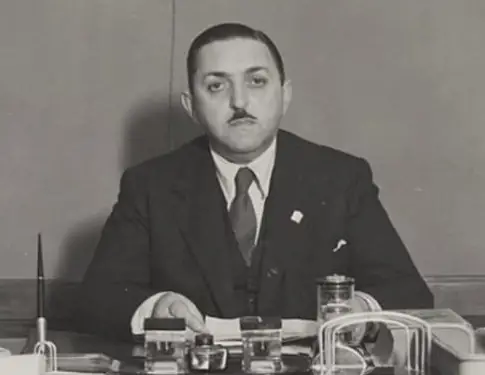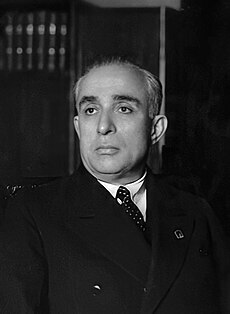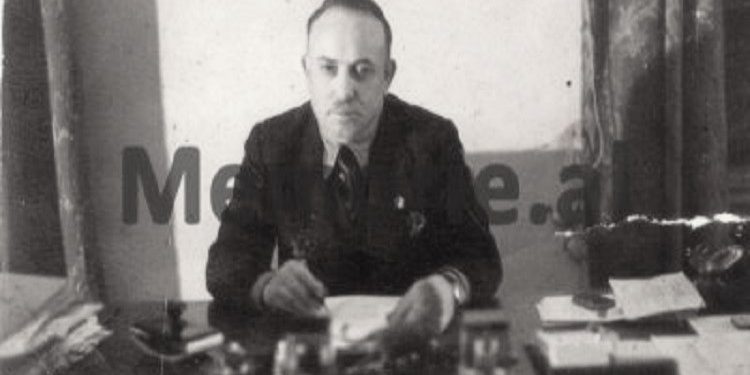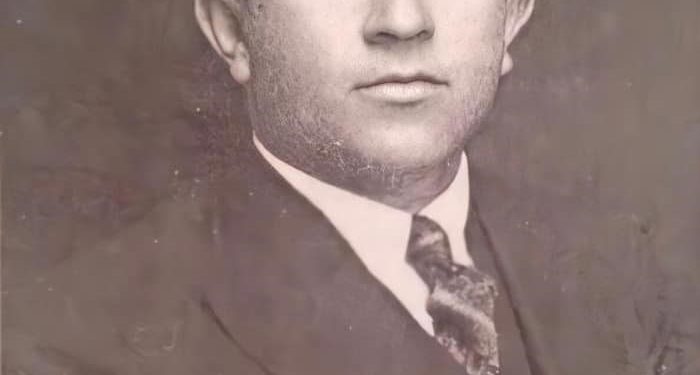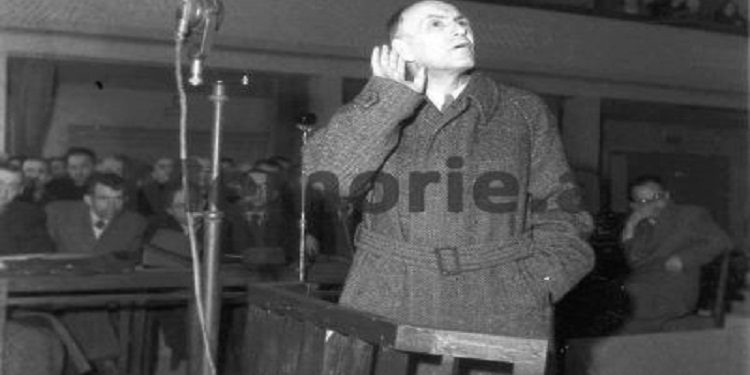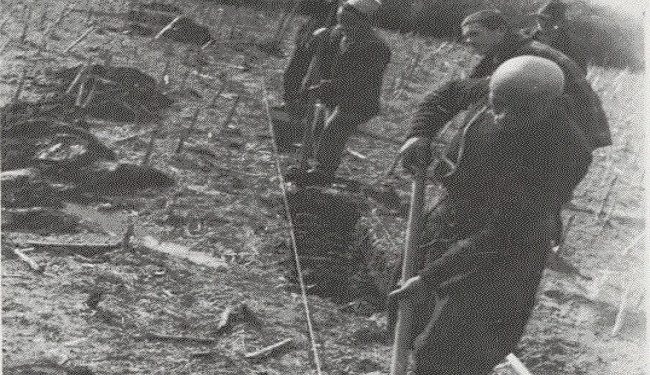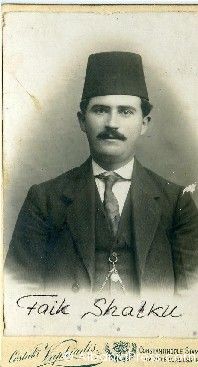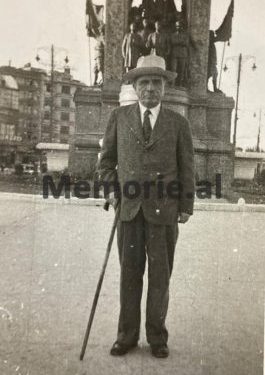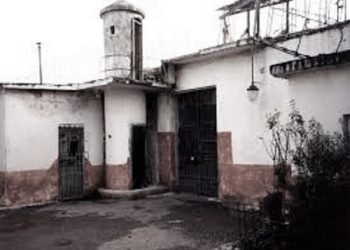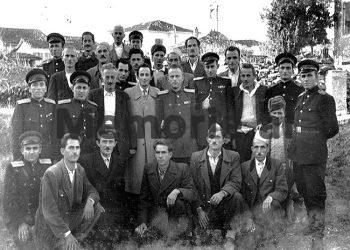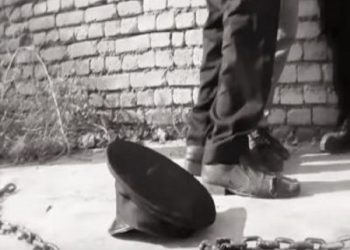Second part
Memorie.al / Seeing the many problems of returning and compensating property as well as the many judicial processes that have developed after the 90s, which are still ongoing for the issues of properties confiscated from Albanian citizens by the communist regime, as well as for all those who have been considered as “collaborators of the Germans and Italians”, we are publishing some articles related to this issue. From the first data, it is established that many of the properties blocked by the communist regime, after the 90s, got new owners and did not end up with the owners and their heirs. These properties, real or movable, passed through the filters of forgeries and manipulations in the cadastral offices or in the offices of Property Return and Compensation. In this article, we are bringing the way the communist regime acted to seize assets for all persons accused of being “former collaborators of the invaders”, including those who publicly opposed the communist regime in power and suffered in prisons and exiles.
Continues from last issue
-The state treasury provided large incomes from property seizures-
The started process seems to have had difficulties in its technical procedure, since the established mechanisms did not have the appropriate speed of action. On October 4, 1945, the Minister of Finance, Ramadan Çitaku, addressed the Central Commission for the Confiscation of Private Assets, saying that; in the preventive budget, the Ministry of Finance anticipated significant income from these assets and therefore requested the acceleration of work (AQSH, P.505, V.1945, D.510, sheet 43). In this article, we are bringing data on the blocking and seizure of assets in the Shkodra District, where the families of Ernest Koliq, Engjëll Çoba and the captain of Mirdita, Gjon Marka Gjoni, were punished. Also, through data and documents, the inventory of the property that the state took from the Vrioni family, one of the richest in the country, is shown.
Shkodër, the confiscation of Malik Bushati’s properties
On October 25, 1945, the Executive Committee of the Shkodra Prefecture reported on the assets of Malik Bushati, Ernest Koliq, Gjon Marka Gjon and Engjëll Çoba, which were estimated to be considerable (AQSH, P.505, V.1945, D.186, sheet 47). On August 22, 1946, the local commission, based on Article 1 of Decree Law No. 249, dated May 27, 1946, was convened for the confiscation of the property of Malik Bushati, from the “28 November” Neighborhood, deciding: the confiscation of a high-rise house, among 72 parts (14 of them) in his neighborhood, while the furniture, had received the Military Corps. On August 8, 1945, a list of furniture and household items was drawn up for his estate, 182 denges of hay (food for cows and cattle), and each weighing 44 kg. each and 776 with wheat as well as 62 denges of hay (AQSH, P.505, V.1945, D.186, sheet 277, 43).
Confiscation of Hasan Dosti’s properties in Tirana and Gjirokastër
The local commission of Gjirokastra, on November 14, 1946, considered the confiscation of Hasan Dosti’s property, based on the documents established on January 18, 1946. Fields in Kardhiq, Plesat, forest grove in Kardhiq. Land 1086.54 square meters, in New Tirana (AQSH, P.505, V.1946, D.145, and sheet 94).
Confiscation of the properties of Izedin Vrioni and Qemal Vrioni
The Commission, on November 18, 1946, took the decision based on the decision of the Special Court, on the confiscation of the assets of those mentioned. On June 7, 1946, the Executive Committee of the People’s Council of Fier Subprefecture, had seized the property of two people there. The entire capital of the “Myzeqeja” Flour Factory in Fier, in which Qemal Vrioni has poured 42 thousand Albanian francs, including all shares, for a sum of 20 thousand Albanian francs. Qemalit’s granddaughter, Mediha Libohova, has complained that a house in Durrës was bought by her, Qemalit, in 1940, while Avroviti Naço demanded 10 thousand francs, for the account of her dead brother, Kristaq Napo, who had protect Qemal Vrioni.
It was established that Izedin Vrioni had not been sentenced by the court, with confiscation of property, and it was necessary to order the lifting of the sequestration done on his property. While that of Qemal Vrion, there was no obstacle to confiscate it. Mediha’s sale was also considered fictitious; as well as the house and land, in the district of Durrës. Qemal Vrioni gave the Italian Guabandilla a house in Como and took from him the house in Durrës, which he sold to Mediha, which was registered on August 12, 1944. For this, it was decided to lift the sequestration on the decision of the 7 June 1945, of the Executive Committee of Fier Subprefecture, over half of the property belonging to Izedin Vrioni. Also, all the properties of Qemal Vrion before 1940 were confiscated.
The list is divided into 18 items (2 houses, one of the harem and the others shops), 300 m2 in Durrës, palace in Durrës (AQSH, P.505, V.1946, D.142, sheets 224-244). Then, the other assets are also shown; 62 shops, 2 warehouses, 1 bakery, 1 house, 1 inn, hundreds of plots of land in Fier, over 1,000 dynym of manors, pastures, etc., in Mbrostar over 1,500 dynym of arable land, in Koxharé, 2,500 dynym of pasture forest, 2,000 dynym of tea land, 650 dynym of cultivated land, in Mbyetme, etc.
Confiscation of Aqif Përmet’s properties
Aqif Përmeti had his family composed of three people. Astrit, the son and Shqipja, the daughter. On November 20, 1946, the local commission confiscated 2 plots of land in Selishte, New Tirana, of 1100 m2, 2/3 of 1 house in New Tirana, 6 rooms, 1 kitchen (AQSH, F.505, V.1946, D. 144, and sheet 73).
Internal order in 1946: “To confiscate the assets of opponents!”
The process of confiscation of assets was clearly a political process to punish opponents. The instruction of May 17, 1946, signed by the Minister of Justice, Manol Konomi, which was sent in the form of a circular to the Executive Committees, says that; The “Law” of December 15, 1944, on confiscations had a generic character and included both those who escaped before the entry into force and those after the entry into force of the law and those who were not far away, but who maintained a hostile attitude towards the new power, for political reasons”. This meant that this process was actually designed against political opponents and not only against those who, willy-nilly, had a connection to the Second World War period.
Minister Konomi requested that the opinion of the Ministry of Justice be taken for the persons who left and who were not against the regime (AQSH, P.505, V.1946, D.142, sheet 16). This circular, on August 6, 1946, was made known to the prefectures by the Ministry of Finance, but adding, also the acceleration of the actions of the fugitives: “as despotic partisans of Zog and others who are far from Albania, but who or after April 7, 1939, maintain a hostile attitude”. (AQSH, P.505, V.1946, D.142, sheet 97).
In a justifying report of the Ministry of Finance, on the creation of local commissions, it was said that there was confusion in the administration and it took several more years to finish this work, requesting the review of Law No. 40, of January 14, 1945, to provide for the creation of local commissions, with the proregatives of the Central Commission (AQSH, P.489, V.1946, D.41, sheet 9).
On May 27, 1946, the Presidium of the People’s Assembly issued the decree: “On the creation of local commissions for the confiscation of assets based on Law No. 40, which provided that in addition to the Central Commission, local commissions could be created in the prefectures.” Law of August 30, 1946 (AQSH, P.489, V.1946, D.145, sheet 1). On July 24, 1946, the General Prosecutor’s Office requested from the Ministry of Finance, the implementation of the law by the Executive Committees, on the seizure and confiscation of goods, as it was pointed out that the finance sections were selling and wasting movable property (AQSH, P.505, V.1946, D.142, sheet 12).
On September 18, 1946, a circular was sent to the Executive Committees of the Prefectures, by means of which it was requested, the restraint to the legal provisions (ibid. page 20). On August 5, 1946, Ramadan Çitaku sent a circular to the Executive Committees, saying that; for everything, he required accurate data (sheet 14). The law passed by the People’s Assembly seized the properties of King Zog’s officials.
List of persons considered “war criminals” and confiscation of assets
On November 22, 1946, the Presidium of the People’s Assembly announced the law voted on the same day by the People’s Assembly: “On the control of the assets placed, during the previous regimes, by state functionaries and entrepreneurs”.
On its basis, all buildings erected or purchased during the past regimes, by ministers, deputies, state or municipal officials, as well as by persons who were state entrepreneurs during these regimes, where they were not in able to justify their legal source, nationalization was declared, by decision of the Ministry of Economy, on the proposal of the Executive Committees of the People’s Councils, of the sub-prefectures (AQSH, F.490, V.1946, D.232, sheet 1).
Based on this law, all those persons who had nothing to do with the War, but who had held important positions before 1939, were confiscated, based on the wishes of those who had come to power.
Confiscation of the properties and assets of Terenc Toçi
The Commission decided, on November 22, 1946, that as long as the 3 dependents of Terenc Toç had left their country of origin, they did not enjoy the right to legal benefits. Toç’s wealth includes:
– 2 plots of land in Tirana with 3.228.57 meters (today the villa “Bardha”) and the two-story house as well as the land and the baths of Durrës (AQSH, P.505, V.1946, D.144, sheet 75).
Confiscation of the properties of Fiqri and Dilaver Dine
On December 20, 1946, the commission in Peshkopi confiscated his properties, which included:
– The grounds of 1 burnt house of 2 dynyms, 1 bakery, the grounds of 1 burnt house of 1 dynym, 1 house of 2 floors with 7 rooms. In addition, movable property of 2 horses, 1 calf, 2 cows, 1 tie sheet, money and 208 kg of grapes, 76 kg of apples and 810 kg of corn. 14 pieces of land of 99 dynyms, some vineyards of 2 dynyms in Poceste, 1 orchard of 1 dynym in Trepçe (AQSH, P.505, V.1946, D.146, sheet 255).
Confiscation of Qazim Mullet’s properties
On December 31, 1946, it was decided to seize the properties of prefect Qazim Mullet, in Tirana. It is placed for ¾ of a house in the neighborhood “Sulejman Pasha” with 311 m2, plot 302.43, 4 shops built in 1942-1943, and plot to the north with “Çiano” street. Two barracks on “Dajti” street. (AQSH, P.505, V.1946, D.144, page 92).
“War criminals”
On January 27, 1947, the Prime Minister informed the Ministry of Finance that it has asked the local commissions to confiscate the property of war criminals and enemies of the people to represent their actions as soon as possible and to send a report at the end of the month.
Vlora and Korça
On January 27, 1947, the commission of Vlora made a decision on all the persons who were on the lists of “criminals” (AQSH, P.490, V.1946, D.252, sheets 13-14). Korça alone had 350 such files.
Expropriation of Enver Hoxha’s brother-in-law, Bahri Omar
On February 10, 1947, Enver Hoxha’s brother-in-law, Bahri Omar, had his property confiscated. He gets 1/6 of 5 shops in the Gjirokastra market, a plot of land of 910 square meters, in New Tirana. 1/3, was left to the family in the “Cfakë” neighborhood of Gjirokastra (AQSH, P.505, V.1947, D.316, sheet 15).
The report of Elbasan
On February 18, 1946, the Elbasan commission sent a report on the confiscation of private property of Elbasan Prefecture. It was said that there were 38 decisions and almost 7 other files, with 25 more in hand (AQSH, P.490, V.1946, D.252, sheet 23).
On February 21, 1947, the local commission of Kukes sent a report to the Prime Minister, in which deficiencies in actions were noted.
Seizure of Abdurrahman Dibra
On February 14, 1947, the confiscation decision was made for Abdurrahman Dibra in connection with the control of the assets of the officials of the anti-popular regime of Ahmet Zogu. It is emphasized that his wealth with modern and expensive equipment could not have been obtained from the sale of any manor house in Dibra e Madhe, but from illegal sources and scams. The committee proposed to the Ministry of Finance to issue a decision on the nationalization of his property: a building of 7 rooms; of approximately 200 square meters in the “1 Maji” neighborhood (“Abdulla Bey” neighborhood) transcribed on November 19, 1943. The decision was issued on March 14, 1947 (AQSH, P.505, V.1947, D.184, sheet 88).
Nationalization of the properties of Pandeli Evangjeli
On February 14, 1947, the Tirana commission decided to propose the nationalization of the properties of Pandeli Evangjeli, former senior politician of the Zozist regime and shareholder in SITA, ‘Stamles’, ‘Maliq’, ‘Portland Çimento’, ‘Banka Kombëtare’ and “Majestic” cinema in Korça. It was pointed out that there was no way that such wealth could have been invested except by fraud. The property was a 2-story building in the “11 Janari” neighborhood, registered on June 30, 1928 (AQSH, P.505, V.1947, D.185, sheet 86). The decision was made on March 14, 1947.
The confiscation of Kola Thaç’s assets
On February 14, 1947, the commission of the Executive Committee of the KP of Tirana Subprefecture, with the same reason, requested the nationalization of his properties, which were a plot of land of 1510 square meters and two buildings on it, registered on May 13, 1933 and May 23, 1934. Former – the Minister of Finance left politics in 1939 and died in 1941.
Confiscation of the properties of the former prefect of Durrës, Zef Kadarja
On March 6, 1947, the local commission of Tirana District decided to confiscate his property:
– Plot in Selitë New Tirana of 1100 m2 plot, new Tirana 182 m2, with house and a house with 8 rooms. The movable property was very large, including his wardrobe, armchairs, and library. In Durrës Kadarja had a villa and two plots of land, while in Shkodër two other houses.
Confiscation of Safet Butka’s properties
The local commission, under the Executive Committee of the People’s Council of the Korça Prefecture, confiscated half of the house in Butka, 5 rooms, 2 sofas, 2 balconies. Movable property 1 ox, 5 sheep, 1 heifer (AQSH, P.505, V.1947, D.315, sheet 77).
Confiscation of Daut Charcan’s properties
The Commission in Tirana, on March 28, 1947, decided to confiscate 4/5 of a plot of land in “Ismail Efendi” (504 m2) and 4/5 of a house there (AQSH, F.505, V.1947, D.311 , pages 21-22).
Confiscation of Thoma Orollogaj’s properties
The Executive Committee of the People’s Council of the Tirana Prefecture, on April 5, 1947, decided to propose to the Ministry of Finance, the confiscation of the property since there was no possibility that he: “had invested this property himself”. A house in the neighborhood “Ismail Efendi” (registered on March 1, 1935), a plot of land of 1100 m2 with a building, 1/2 of a building in “Rrugën e Barrikadave” (registered on April 4, 1936) (AQSH, P.505, V .1947, D.186, sheet 122). Also 1 house on March 22, 1945 and shares from the “Majestic” Cinema. On June 6, 1947, the decision of the ministry was issued.
Confiscation of Faik Shatku’s properties
On April 14, the Executive Committee of the People’s Council of the Tirana Prefecture decided on the nationalization of the property, after this person had died, contradicting the widow, Razie Shatku, that Faiku had the property from her mother-in-law, Zyhra Krifsca. They were expropriated, 583 m2 of land and the house in the neighborhood “Abdulla Bey” (street “Qemal Stafa”), transcribed on September 22, 1942. The decision was taken on the basis of certificate no. 32, April 1, 1947 (AQSH, P.505, V.1947, D.186, page 208).
Confiscation of Mehdi Frashër’s properties
On April 19, 1947, by the Gjirokastra commission, on the property of Mehdi Frashër, seized on September 17, 1946. A burnt, ruined, one-story house in Frashër (AQSH, P.505, V.1947, D.316, sheet 155) and a plot of land in Tirana, 1100 m2 in the neighborhood “9 Korriku” as well as the house with 17 rooms and the property inside it (AQSH, P.505, V.1947, D.311, sheet 80). Memorie.al




